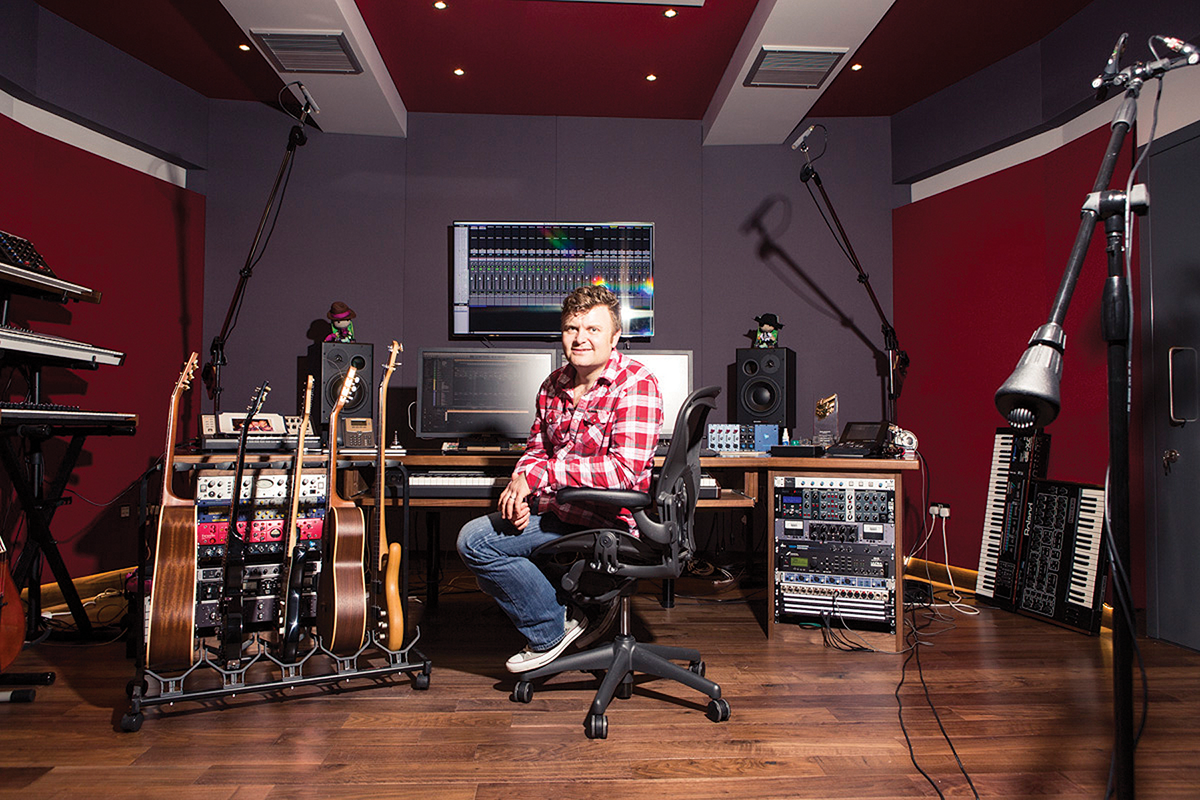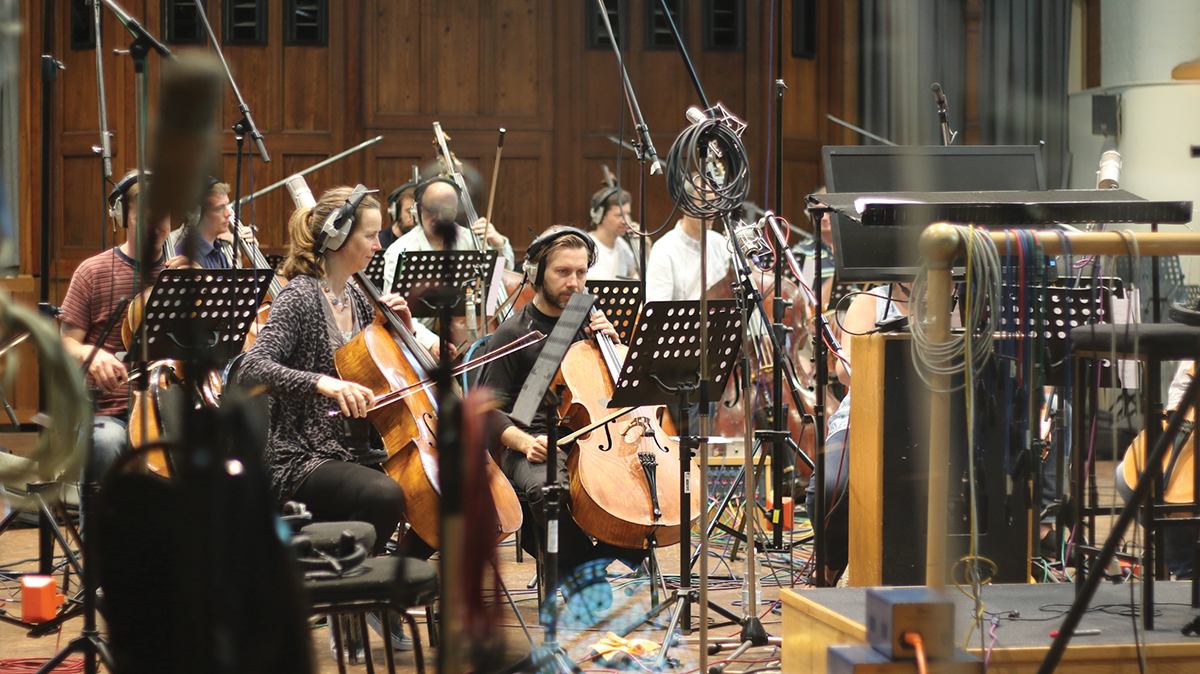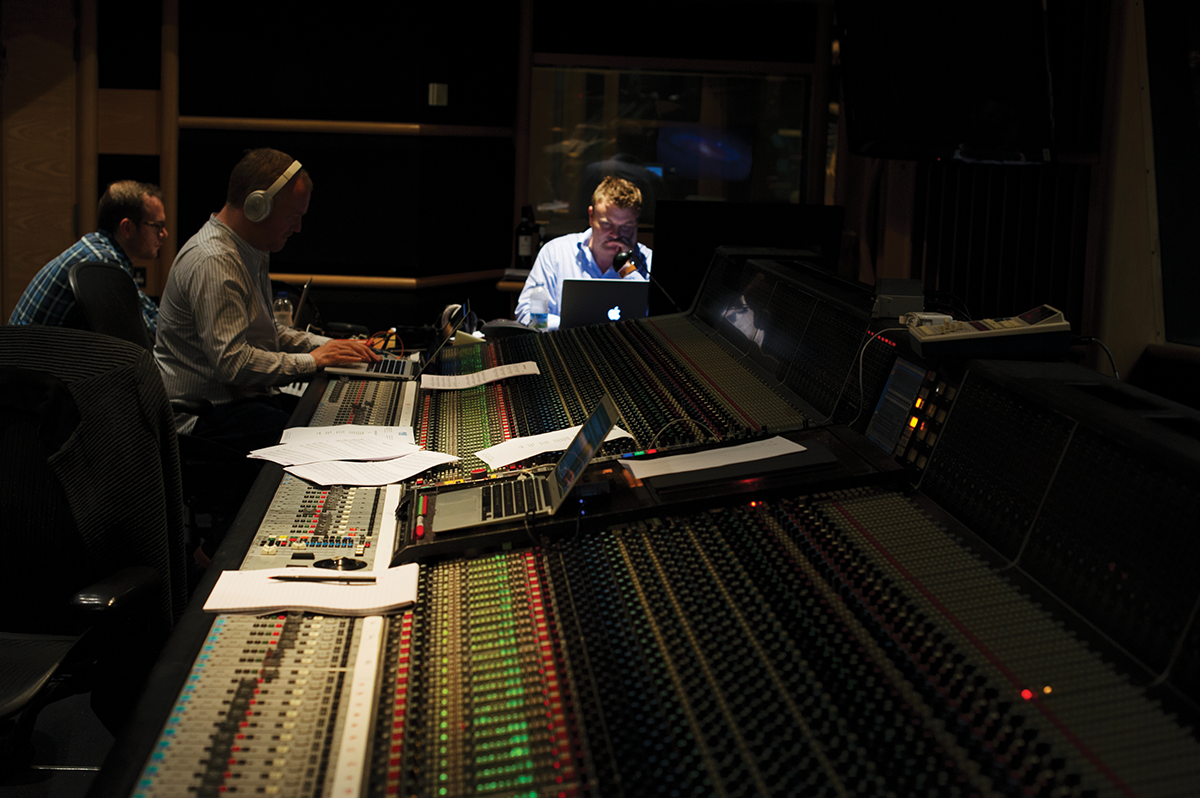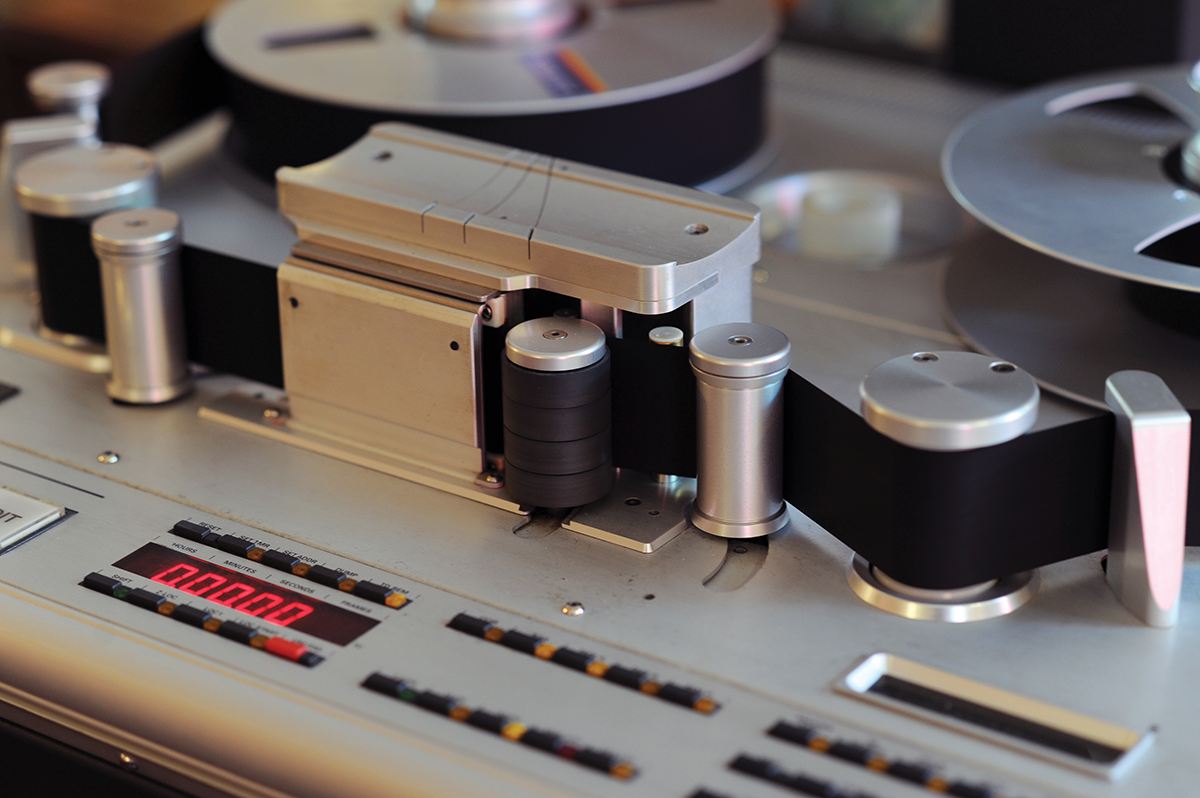Spitfire Audio – The MusicTech Interview
In the latest of our industry spotlights, we talk to Paul Thomson and Christian Henson, the founders of Spitfire Audio, fast becoming the go-to library company for composers everywhere, and flying the flag for British music technology… Every month, we highlight some of the big players in the music-production industry. This time, we’ve tracked down […]

In the latest of our industry spotlights, we talk to Paul Thomson and Christian Henson, the founders of Spitfire Audio, fast becoming the go-to library company for composers everywhere, and flying the flag for British music technology…

Every month, we highlight some of the big players in the music-production industry. This time, we’ve tracked down the founders of Spitfire Audio, a company that has been around for less than a decade but has already made its mark with some of the best sample libraries out there, and has quickly become the number-one name for film and TV composers across the globe. Paul Thomson and Christian Henson are the founders of the company and responsible for libraries like Albion and a vast range of orchestral collections…
MusicTech: Tell us a little about how Spitfire Audio came about…
Spitfire Audio: Spitfire began as a private sample library born of our frustrations with the existing tools available to composers and producers back in 2007.
It started as a two-man cottage industry which gathered a small group of A-list film composers together to create a new kind of orchestral sample library, recorded exactly the same way the biggest Hollywood scores are recorded, in the same studio, with the same players in London.
As it started to expand, we saw that there was an opportunity to reinvent the way orchestral samples are recorded. We approached things from a slightly maverick point of view, with an instinct for what would keep life and musicality in the sounds. We’d say, “instead of recording samples, we’d record film scores, but one note at a time.”
MT: What was your original goal of Spitfire Audio when you set the company up?
SA: We wanted to create inspiring tools and collaborate with fellow soundsmiths. Rather than try to imitate what the great creatives do in our field, we wanted to work with them to achieve really inspirational products that help people write better music.
We also wanted to make sure the musicians were central to the process, so agreed from the get go that they would be paid a royalty. In those days, sampling felt like something companies on the periphery of the music industry did to leach off it. We wanted sampling to be a central process, from within the music industry.
MT: What is it that sets Spitfire Audio products apart from other libraries?
SA: We have an affluent approach across the board. Every element of our signal chain, from the performer to the desk, is absolutely uncompromisingly the best available. We use tape where we think it benefits the end recording, irrespective of how difficult it is to achieve.
An example is setting up a 48-track mobile studio with all Neve mic pres in the beautiful Headley Grange, to record some legendary drummers where Bonham and Johns created the ‘Levee’ drum sound.
We also place a huge premium on life and musicality. We despair to hear clinical and mechanical sounding virtual instruments. A colleague of ours worked with George Clinton a few years back, and wanted to correct a specific note on a guitar take citing an erroneous F#. George Clinton said “that’s not a mistake, that’s the funk”. This resonates with us – it’s not knowing what to abandon which is the secret, it’s knowing what to keep!

Christian Henson: “We use tape where we think it benefits the recording”
MT: Which have been your most successful products and why do you think that is?
SA: Our Albion range, for its ease of use and ‘out of the box’ sound; also our Hans Zimmer collaborations, due to the extraordinary attention to detail and huge creativity and care he approaches everything with.
Then there are our collaborations with the inventive talent that is Ólafur Arnalds, due to his singular creative vision and uniqueness as an artist; and then products like our Swarms (nine harps, 19 guitarists); and our Evogrids for their new approach to creativity, and for allowing the user to substitute a curiously beautiful and yet unrecognisable sound for what would usually be in its place. I guess that’s when being composers, not software developers becomes really fun. It’s like the world’s biggest musical train set!
MT: Where would you like Spitfire to be as a company in five years’ time?
SA: We’ve been going for 10 years now, and in the last five, we’ve been building a team of fantastic people from far and wide with countless and disparate disciplines. This enrichment of our business is an honour to be a part of and is something that will continue into the future.
We would like Spitfire to be ushering in a new enthusiasm for orchestral music among the young, and helping to educate a new generation of music makers in the beauty of orchestral instruments and the joy of collaboration with live players. We also see a shocking disparity between the number of male users we have versus female and we really want to figure out how we can address that.
We were watching a video in the office the other day, an interview with two of our heroes, Pharrell Williams and Daniel Lanois, geeking out about guitar amps, corridors and Pulteq EQs.
There is a really shocking moment about halfway in. In using this as a template of how NOT to make educational content, we all agreed, “Well, surely it would be a start just to NOT have naked women in their 20s appearing in our edu content serving tap water to middle-aged men!”. I think we were all depressed to see how far we still have to go in the music industry.

MT: How would you like to be remembered in terms of your company profile?
SA: Spitfire worked from within the industry, rather than leeching off the outside of it; helping to sustain and grow orchestral music via its voluntary royalties on sales to players and technicians, via its regular and increasingly inventive recording sessions in the top studios, and via promoting the work of a community artists and creatives worldwide. I guess ethical and non-exploitative, the latter of which so many areas of the music industry can be.
MT: What do you think about the way music production has gone over the last decade in terms of technology? What has been the good, and the not so good?
SA: We love the ‘unusual’ in music production technology. We welcome interesting and unique approaches to increasing creativity. We love analogue hardware as well as computers. We appreciate the quest for excellence in all fields – microphones, instrument design (our good friend and incredible trumpeter Mike Lovatt has just released an amazing new trumpet); and synth design (we love our Moogs and our Zebras).
Our 10-year journey has also given us a fascination in the spaces we work and how that can affect the performance. Whether it be the Wigmore Hall or Headley Grange, we believe places have a part to play in the history of music and feel that many artists are waking up to this and not recording every instrument like your ear was right next to it, which has characterised a lot of recordings in recent times.

MT: Music production did become a little obsessed with being ‘in the box’, but has properly broken out in recent years. As a software company, what is your take?
SA: It has unlocked a huge amount of potential. The ability to create and collaborate is hugely enhanced. As users, we must always ensure that we are working with musicality, whether creating a synth line, programming beats, or recording audio.
Avoid the soulless at all costs! Work with your DAW until you can play it like a concert pianist… Make the computer an instrument. But there is one major lesson we have learned over the years, though, and that is to get it right before it goes in the box. We see so often a temptation to fix things with acres of plug-ins. Experience has shown us that getting the performance right, into the right mic, positioned correctly and recorded via the best possible signal path, will reduce the need for post-operative interventions.
MT: Which production techniques are you most commonly asked about and why do you think that is?
SA: Whether tape really sounds better. I was accused of it being a marketing stunt by another dev and had to defend our position vehemently. For us, sampling has enabled us to analyse such processes with an atomic microscope. With our line of work, you have the immediate challenge of duplication. The minute you play more than one note, you duplicate the number of players, the number of halls and microphones you have.
By the time you’re playing an entire symphony orchestra, you could be talking several hundred halls, and several thousand microphones. So while the minute amount of bevelling and varnish that tape adds to a single recording may seem minimal, its net result, when using our samples in a symphonic sense, can be absolutely enormous. Someone was asking me why Spitfire sounded so unique and it’s one of the rare opportunities for retort with a single word… “tape!”.
MT: So when asked, what is your reply, in less than 100 words!?
SA: “TAPE!”

MT: Similarly, what is the biggest production mistake that you hear and what is your cure-all advice for it?
SA: Not making the most of what you have got. Work with your parts and elements – make sure everything is there for a reason and make each element sing proudly. Massage it until it purrs like a cat and don’t, whatever you do, record a piano in the winter and then do a recall in the summer. It won’t work!
MT: What advice would you give anyone entering the world of music or production to make a living these days?
SA: This may seem like dev suicide, but I think everyone agrees you need a computer, some speakers, a controller and a DAW. Many would say “then you need some samples”. I always say, “no, the next thing you need is a microphone.”
If you want to sound original, take what is around you and capture it. When you get too busy to do this after the BAFTAs and Ivors, then come to Spitfire for that original spirit of sound making and we’ll keep you happy, but until then, find your sound. I would also recommend keeping an open mind.
I have been wanting to be a film composer since I was five. Thing is, I now have a five year old, and he’s not at a stage to make career choices! So, while it may seem nice to say “I’ve been dreaming of doing this since I was a baby”, since when do you engage a toddler to do your career planning? I see countless people discover areas of the business that give them pleasure and satisfaction way above what their original ambition was.
Whether that be teaching, or supervising, orchestrating, or writing for ballet… Or indeed setting up a sample company where you travel the world while you’re playing train sets with your childhood heroes!

MT: What’s music production’s future?
SA: Hybrid. Computerisation of the studio, and indeed our bedrooms has ruled supreme for a decade – I see people now thinking more out of the box. I look forward to a future where fixed tempo, quantisation, pitch corrected and virtual are mere tools of our trade, not obligations.
MT: And finally, a gratuitous plug for your company and any upcoming products?
SA: I’ll do a gratuitous tease, if I may… We have a series called Albion, which, as we mentioned, has been hugely successful. There’s four so far. So far…